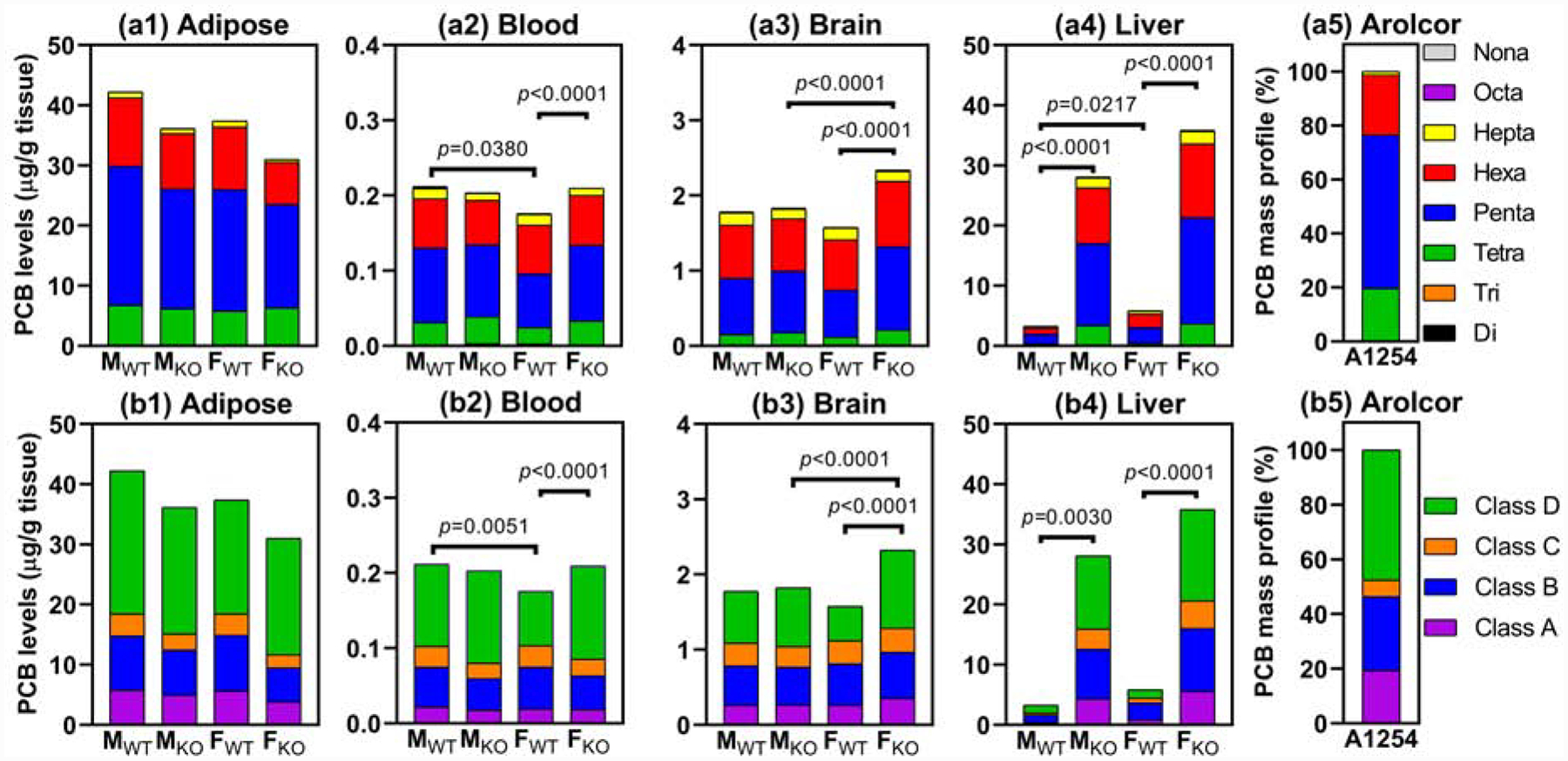Fig. 1.

PCB homolog composition, based on PCB homolog tissue levels (μg/g wet weight), in (a1) adipose, (a2) blood, (a3) brain, and (a4) liver and PCB Class composition in (b1) adipose, (b2) blood, (b3) brain, and (b4) liver showed statistically significant genotype and sex-dependent differences, as determined using two-way ANOVA. Total PCB levels (ΣPCB, μg/g wet weight) showed statistically significant differences between WT and KO mice in the male liver (p=0.0010), female liver (p=0.0004), and female brain (p=0.0002) (Table S13). The composition of Aroclor 1254 by homolog group and Class is shown for comparison in panels (a5) and (b5). Class A: PCBs congeners with a 4-, 3,4-, and 3,4,5- substitution pattern and zero or one ortho chlorine substituent. Class B: PCB congeners with two or more ortho chlorine substituents and a 2,4- or 2,3,4- substitution pattern. Class C: PCBs congeners with a 2,4,5-substitution pattern. Class D: PCB congeners with, in contrast to Classes A through C, are readily metabolized and, for example, a 2-, 2,3-, 2,5- and 2,3,6-substitution pattern in at least one phenyl ring (Haraguchi et al., 2005). Levels of PCB congeners were measured by GC-MS in tissues from male wild-type (MWT, n=3), male knockout (MKO, n=5), female wild-type (FWT, n=4), and female knockout (FKO, n=4) mice exposed orally to Aroclor 1254.
